Kedarnath Dham
Kedarnath is an ancient and magnificent temple located at an elevation of 3,583 m (11,755 ft) in the Rudra Himalaya range. The temple is over a thousand years old and built of massive stone slabs over a large rectangular platform.
Kedarnath is located in the state of Uttarakhand, India. Due to extreme weather conditions, the temple is open to the general public only between the months of April (Akshaya Tritiya) and November (Kartik Purnima, the autumn full moon). During the winters, the vigraha (deity) from Kedarnath temple is carried down to Ukhimath and where the deity is worshiped for the next six months.
Kedarnath is amongst the holiest pilgrimages for the devout Hindu. It is set amidst the stunning mountain scape of the Garhwal Himalayas at the head of the Mandakini River. Kedar is another name of lord Shiva, the protector and the destroyer. The shrine of Kedarnath is very scenically placed, and is surrounded by lofty, snow– covered mountains, and during summer grassy meadows covering the valleys. Immediately behind the temple, is the high Keadardome peak, which can be sighted from great distances. The sight of the temple and the peak with its perpetual snows is simply enthralling.
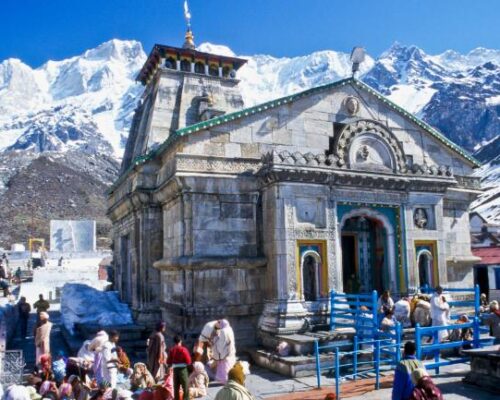
Gaurikund & Sonprayag
Gaurikund:
Gauri Kund is a Hindu pilgrimage site and base camp for trek to Kedarnath Temple, in Uttarakhand, India. It is situated at an altitude of 6502 feet in the Garhwal Himalayas.
Gauri Kund is connected with Shiva’s wife Parvati, also known as Gauri. In Hindu folklore, Gauri committed penance involving many ascetic and yogic practices to win over Shiva’s affections. Local tradition claims that Gauri Kund is the spot where Gauri lived while carrying out these practices and it was here that Shiva finally admitted His love for Her. They were married at Triyugi Narayan, which is located nearby. There are hot springs in Gaurikund and they are converted to bathing places.
This place is also associated with the legend of how Ganesha acquired his elephant head. While bathing in the kund, Goddess Parvati fashioned Ganesha from the soap suds on Her body, breathed life into Him and placed Him at the entrance as Her guard. Lord Shiva happened to arrive at the spot and He was stopped by Ganesha. Indignant at this affront, Shiva cut off Ganesha’s head and Parvati was inconsolable. She insisted that the boy be brought back to life and Shiva took the head of a wandering elephant and placed it on Ganesha’s body. Parvati had Her son back and Ganesha acquired the persona by which He is known all over the Hindu world since then
It is the base to the Kedarnath trek. The village has hot water springs and a temple dedicated to Goddess Gauri.
Sonprayag:
Sonprayag is a village in the Chamoli district of Uttarakhand state in India. Situated on the banks of river Mandakini River, it is a proposed Y-forked railway junction on Chota Char Dham Railway for two different railways going to Kedarnath and Badrinath.
Sonprayag is a place of religious significance located in-route to Kedarnath Dham. It is situated at an elevation of 1829 meters and offers a scintillating view of snow covered mountains and lush green Sonprayag valley.
Triyuginarayan & Vasuki Tal
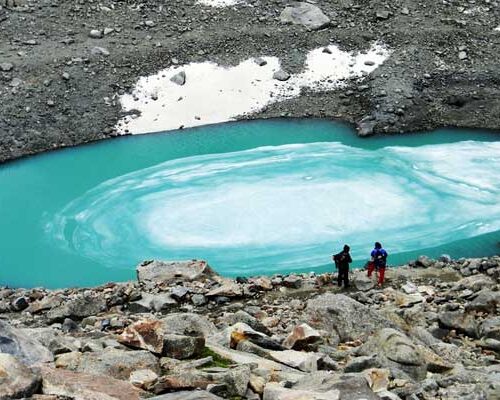
Triyuginarayan & Vasuki Tal
Triyuginarayan:
Triyuginarayan is a well-known Hindu pilgrimage located in the Rudraprayag district.This picturesque village is perched at an elevation of 1,980 and offers panoramic views of snow covered mountains of the beautiful Garhwal region. The architecture of this temple resembles that of Badrinath shrine.
Vasuki Tal:
Vasuki tal is a glacial lake situated at an impressive altitude of 14,200 feet above sea level in Kedarnath Dham. It can be reached by a 7km moderate trek from Kedarnath. The lake is located at an altitude of 4,150 mts above sea level surrounded by Himalayan peaks.
Badrinath Dham.

Guptakashi
Guptakashi, Gupta Kashi or Guptkashi is a fairly large town located at an elevation of 1,319 metres in the Kedar-khanda, in Garhwal Himalayas of Rudraprayag district in Uttrakhand, India. It is known for its ancient Vishwanath Temple dedicated to the god Shiva, which is similar to the one in Varanasi.
The name Guptkashi means “Hidden Benares. Mythology describes how when the Pandava brothers were searching for a glimpse of Shiva, Shivji first concealed himself at Guptkashi, but later fled from them further up the valley to Kedarnath, where the Pandavas finally got their wish fulfilled. There are more tangible connections as well-the Kedarnath pandas (priests) live in Guptkashi during the winter months, and after the Kedarnath temple closes for the winter, the image of Kedarnath passes through Gupt Kashi on its way to Ukhimath (across the valley), where it stays for the winter.
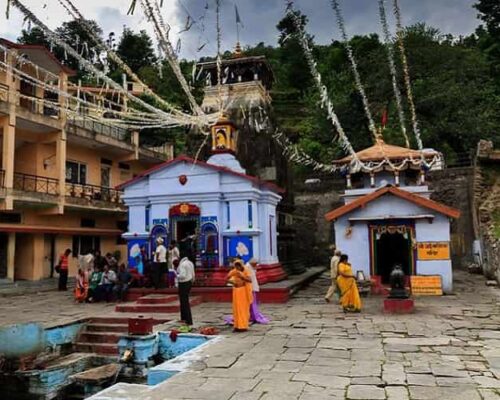
Ukhimath
Ukhimath is situated at an elevation of 1317 mts above sea level in Rudraprayag district of Uttarakhand state. Ukhimath is also written as Okhimath sometimes. Ukhimath is the home of Lord Kedarnath and Madhyamaheshwar during winters. Worship is performed at the Omkareshwar Temple here during winters, when the temple of Kedarnath remains closed.
Ukhimath is mainly inhabited by the Rawal’s who are the head priests (pundits) of Kedarnath. Snow capped peaks of the splendid Himalayan range are distinctly visible from Ukhimath.
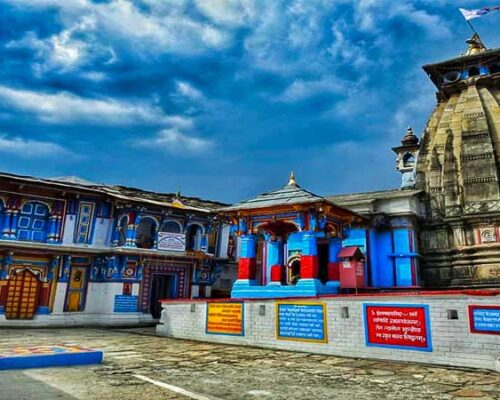
Rudraprayag
Named after Lord Shiva (Rudra), Rudraprayag is situated at the holy confluence of Alaknanda and Mandakini rivers, at a distance of 34 km from Srinagar (Garhwal). The presence of two separate routes for Badrinath and Kedarnath Dham from Rudraprayag render great importance to the place. The entire region is blessed with immense natural beauty, places of religious importance, lakes and glaciers.
Rudraprayag is a small town that is located in the state of Uttarakhand and in the district of Rudraprayag. The town is situated at the confluence of the River Alaknanda and River Mandakini. It has a special religious significance for many people as well. It is said that the place where the two rivers meet resembles two sisters embracing each other and there is a unique beauty about the place. Many visitors travel to the place to witness this phenomenon every year. The entire area is surrounded by immense beauty and one can see many lakes, glaciers, rivers and streams here. There are a few temples that are located in the town as well and these are a must visit while travelling to Rudraprayag.
The main temples are the Jagdamba Temple and the Shiva Temple. The town of Kedarnath which is an important pilgrimage center for many Hindus is located around 86 km from the town of Rudraprayag and this can be visited as well. The Koteshwar Temple can be seen on the banks of the Alaknanda River and this is also a popular site in the town. Son Prayag and Ukhimath are present outside the town and are important religious sites as well.
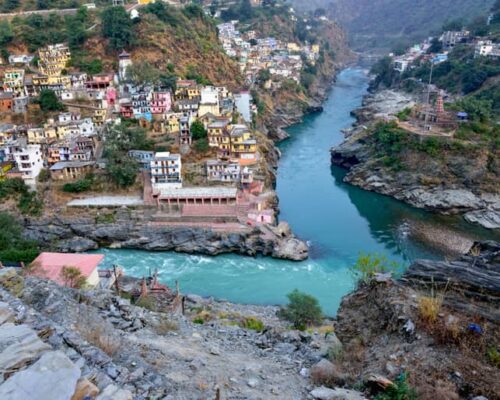
Badrinath Dham
Sandwiched between Nar and Narayan mountain ranges, Badrinath in the Chamoli district of Uttarakhand is one among the most sought after pilgrim centers in the Indian subcontinent. Badrinath is beautifully set in the backdrop of the colossal Neelkanth mountain peak and never fails to make the visitor spellbound with its unparalleled gorgeousness. The term Badrinath is a derivative of Badri, which means the place where berries grow abundantly.
Badrinath offers the awesome beauty of the snow clad mountain peaks and the surging landscapes of the Garhwal region. Following is the list of tourist places in Badrinath. Badrinath Temple:
Badrinath is the most sacred Dham of India. It is located at an elevation of 3,133mts above sea level in the Chamoli district of Uttarakhand state. This Dham was established by Adi Shankaracharya in the 9th century. The deity of Badrinath temple is Lord Vishnu. The temple is situated on the right bank of the holy Alaknanda River.
TaptKund:
Tapt Kund is a natural thermal spring where the devotees take a holy dip as it is very important to take a bath before visiting a temple. It is also believed that the kund has medicinal values and can cure allergies of the people. All the devotees take holy dip in the natural hot water together with unknown people. The people may be unknown to each other but their purpose of visit is the same, i.e. to worship in the sacred Badrinath Dham.
Brahma Kapal:
Brahma Kapal is a place where Hindus perform propitiating rites for their deceased ancestors. Brahma Kapal is a flat platform on the bank of river Alaknanda. You can see several pundits sitting with ‘pooja samagri’.
Neelkanth:
Situated above the Badrinath Temple, Neelkanth peak is named after Lord Shiva. The cliff of the peak is the first place where the sun casts its crimson rays. Neelkanth is a Pyramidal-shaped snowy peak and if you carefully observe its cliff then you can see as if Lord Shiva is sitting looking at the sky.
Mata Murti Temple:
Situated 3kms from Badrinath, Mata Murti Temple is dedicated to the mother of Lord Narayan. According to mythology Mata Murti prayed Lord Vishnu to take his next avatar by coming out from her womb. Lord Vishnu then happily agreed and came into world as twins, Nar and Narayan to kill a monster. Every year a fair is held in the month of August at Mata Murti Temple
Charan Paduka:
Situated 3km above Badrinath Temple lies a beautiful meadow carpeted with wild flowers in the summers. A boulder bearing the footprints of Lord Vishnu is located here known as Charanpaduka. It is said that when Lord Vishnu descended from Vaikunth he stepped on this boulder. The area is a steep climb from the town and is full of caves & boulders.
Narad Kund:
Located near Tapt Kund, this kund is believed to be the recovery source of the Badarinath idol. The hot water springs comes out from beneath the Garur Shila and falls into a tank. Darshan of Badarinath is always preceded by a holy dip in this kund. Apart from that there are many other hot water springs. Devotees take a dip in them for their religious and medicinal value.
Mana:
Mana is very close to the Tibet border and it is one of the last villages of India. Most of the tourists who visit Badrinath also come to see the end of the road at Mana. Mana is inhabited by Indo-Mongolian tribes often called bhotias. Mana is situated 3kms from Badrinath.
Bheem Pul:
Bheem Pul is an enthralling and adventurous place with mythological importance. This is the place where Bheem threw a big massive rock to make a path joining two mountains so that Draupadi could walk easily on it. Saraswati River is coming from between the mountain with immense force to merge with the water of Alaknanda River.
Sheshnetre:
On the opposite bank of the river Alaknanda, in the lap of Nar Parvat, there are two small seasonal lakes. Between these lakes is a boulder having an impression of the legendary snake, Sheshnag. The formation of an eye on the boulder is natural.
Panch Dharas & Panch Shilas:
The Panch Dharas (five streams) which are famous in Badaripuri are Prahlad, Kurma, Bhrigu, Urvashi & Indira dhara. The most striking of these is the Indira dhara, about 1.5 km north of the town Badaripuri. Around the Tapt Kund there are five blocks of mythological importance called Narad, Narsimh, Barah, Garur & Markandeya Shilas (stone)

Joshimath & Auli
Joshimath, also known as Jyotirmath, is a city and a municipal board in Chamoli District in the Indian state of Uttarakhand. Located at a height of 6150 feet, it is a gateway to several Himalayan mountain climbing expeditions, trekking trails and pilgrim centres like Badrinath.
Joshimath is one of the four ‘math’ created by Adi Shankaracharya. Joshimath is the home of Shri Badrinath during winters. Joshimath is connected with Auli by the highest cable car of Asia. Joshimath is situated at an elevation of 1,890mts above sea level. Do visit Kalpavriksha and Narsingh temple while visiting Joshimath. The town is situated 14kms from Joshimath.
Auli is a Himalayan ski resort and hill station in the north Indian state of Uttarakhand. It’s surrounded by coniferous and oak forests, plus the Nanda Devi and Nar Parvat mountains. A long cable car links Auli to the town of Joshimath. North of Auli are the colorful Badrinath Temple, a Hindu pilgrimage site, and the Valley of Flowers National Park, with its alpine flora and wildlife like snow leopards and red foxes.
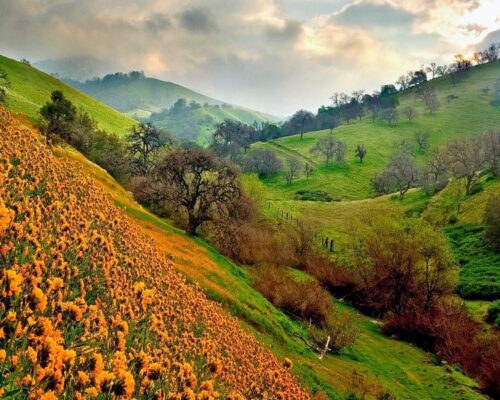
Pauri
Pauri is a town and a municipal board in Pauri Garhwal district in the Indian state of Uttarakhand. Pauri is the seat of the Divisional Commissioner of the Garhwal Division. Beautiful valleys, azure sky, and deep gorges makes Pauri a well suited summer destination.
Diverse in topography, the district of Pauri Garhwal varies from the foothills of the Tarai of Kotdwar to the soul-lifting meadows of Dhanaulti, sprawling at an altitude of 3,000 m, which remains snowbound during the winter months. Pauri Garhwal is surrounded by the districts of Chamoli, Nainital, Bijnor, Haridwar, Dehradun, Rudraprayag and Tehri Garhwal. Filled with places of tourist’s interest, most locations in Pauri offer a breathtaking view of the snow-laden Himalayan splendour.
Pauri town Is situated at an elevation of 1814 m Pauri provides a panoramic view of the snow clad Himalayan peaks of Bander Punchh, Swarga-Rohini, Jonli, Gangotri Group, Jogin Group, Thalaiya-Sagar, Kedarnath, Kharcha Kund, Sumeru, Satopanth, Chaukhamba, Neelkanth, Ghoriparvat, Hathiparvat, Nandadevi and Trisul.
Some of the popular tourist attractions in and around Pauri are Khirsu, Doodhatoli, Jwalpa Devi Temple, Kandoliya Temple, Devprayag, Chaukhamba View Point, Kyunkaleshwar Mahadev Temple and Tarkeshwar Mahadev Temple.
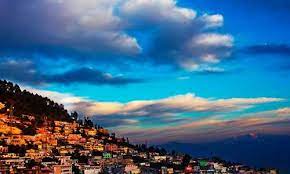
Rishikesh
Rishikesh is a town in the Dehradun District of Uttarakhand state in India. Rishikesh is situated at 409 meters above sea level in the foothills of Garhwal Himalayan Range and surrounded by the Shivalik range. 35 kms from Haridwar, Rishikesh has a spectacular view of jungle-clad hills. Rishikesh has also confluence of River Ganges and Chandrabhaga. Rishikesh is known as an abode of sages. Rishikesh is a holy town with so many Ashrams and it is famous for yoga world wide.
Two bridges (jhulas) known as Ram Jhula and Lakshman Jhula draw huge tourist attraction.. Rishikesh is also known for its water rafting facilities.
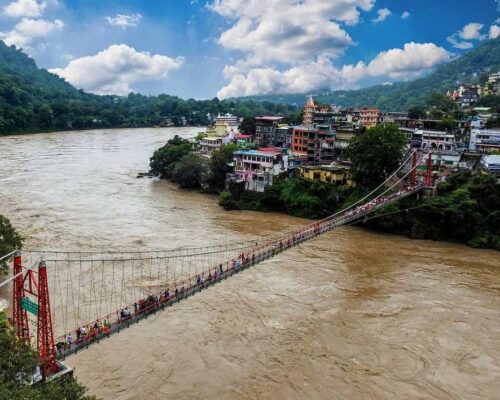
Haridwar
Haridwar serves as the Gateway to the Char Dhams of Uttarakhand and Dev Bhomi. The ‘Panch Tirth’ or the five pilgrimages located within the periphery of Haridwar, are Gangadwara (Har Ki Pauri), Kushwart (Ghat), Kankhal, Bilwa Tirtha (Mansa Devi Temple) and Neel Parvat (Chandi Devi).
Haridwar is also one of the four places; where Kumbh Mela occurs after rotation every twelve years and Ardh Kumbh after every six years. Haridwar has not only remained the abode of the weary in body, mind and spirit, but also served as a centre of attraction for learning the arts, science and culture. Haridwar has a long standing position as a great source for Ayurvedic medicines and herbal remedies as well as its unique Gurukul school system of traditional education. Rajaji National Park is just 10 kms from Haridwar. It’s an ideal destination for wildlife and adventure lovers. In the evening, the Ghats look breathtakingly beautiful as thousands of Diyas (lamps) and marigold flowers float and illuminate the holy waters.

